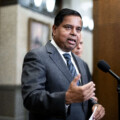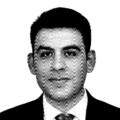What week has not gone by lately without disturbing news of another Toronto resident being slashed, hacked, or otherwise attacked on the TTC?
The Toronto Police Service have deployed dozens of officers to patrol the city’s transit systems, and Mayor John Tory’s sudden resignation has led to calls for a law and order candidate to run to replace him.
While the threats to public safety in Canada’s largest city have made many recent headlines, smaller cities across the country have been dealing with declining public safety for years, making it a truly national phenomenon.
No federal commission has been called to investigate any links between these issues and violent crime, but politicians at all levels of government have not been shy to comment.
Conservative leader Pierre Poilievre has called for action from the federal government to curb what MP Raquel Dancho has described as a “violent crime wave“.
Last month, Prime Minister Justin Trudeau put the onus on the cities and provinces to solve the issue, but said that he was paying attention to it.
“If there is a role for the federal government to step up, we will no doubt step up,” Trudeau said. “It’s something we are happy to partner with provinces and municipalities on.”
Experts have suggested it’s an aftershock of the pandemic, during which over 12 percent of the paid Canadian workforce was laid off, people struggling with mental health were subjected to prolonged physical and social isolation, shelters cut the number of beds available, and outdoor homeless encampments grew from Victoria to Halifax.
Whatever the cause, the issue has quickly become a top priority for Canadians, according to recent polling, and many Canadian cities are experiencing some version of this crime wave.
It is becoming more common in downtown Edmonton for storefronts to be smashed with bricks and pedestrians to be accosted or assaulted, sometimes fatally. The situation has led to the deployment of the provincial police, the Alberta Sheriffs Branch, to Edmonton early this month to downtown Edmonton to reinforce the city police’s patrols in the core.
“Edmonton is not an anomaly, it’s cities across North America (that) are struggling with the impacts of the pandemic on their downtown cores,” says Alexandra Hryciw. “There’s been a heightened safety issue that Edmonton’s been addressing just in terms of houselessness and mental health and addictions.”
Winnipeg faces similar issues, owning the grim distinction of having Canada’s highest homicide rate for a city with more than 500,000 people in 2020. In July, it was reported that Winnipeg had seen gun violence rise by 27 percent over five years.
That same month, a rise in reports of violent attacks at The Forks, a popular Winnipeg neighbourhood, was described as “not new” by the city police chief, who noted that it was worse in other areas of the city.
Police and city government officials in Toronto and Vancouver have reported the majority of random attacks taking place in both cities are perpetrated by people suffering from mental illness.
Research in B.C. suggested that while violent crime decreased in Vancouver’s more affluent areas, it increased in downtown Vancouver, the most densely populated part of the city and where most of the city’s homeless population lives, even if research showed just a 3.9 percent increase in assaults across Vancouver in the first half of 2022, and a 5.6 percent increase in violent crime overall.
In December 2022, the Toronto Star reported that violence on the city’s transit system had increased, and in 2021, reported a 10 percent increase in assault, sexual assault, robbery, and harassment in the city.
Statistics compiled by the Toronto-based Centre for Addiction and Mental Health (CAMH) found that people with mental illness were twice as likely to suffer from addiction. CAMH also reported that addicted persons can be up to three times more likely to have a mental illness.

Hryciw says addiction and public safety are intimately connected, and that the absence of so many workers from downtown during the pandemic made the situation worse. In 2022, crime rose in Alberta’s capital for the first time in 3 years.
Hryciw is the chair of Edmonton’s Downtown Recovery Coalition (DRC), which was founded in September 2022 to address the city’s problems. The DRC advocates for a more visible police presence to improve public safety, revitalizing the city’s infrastructure, increasing spaces for homeless people, and long-term recovery spaces for addicted persons.
Last December, the social services organization Homeward Trust Edmonton estimated that approximately 3,000 homeless people lived in the city, nearly double the 2018 population.
According to Hryciw, the 2016 opening of Rogers Place, the Edmonton Oilers’ home arena, brought a lot of foot traffic back to downtown, but the core still struggles on non-game days.
A survey from last October found 56 percent of residents in the Winnipeg core felt more unsafe than they did the previous year, while roughly half of all surveyed Winnipeggers felt the same.
In 2011, Winnipeg Mayor Sam Katz and Air Canada got into a dispute when the airline ruled out allowing their pilots to stay overnight in downtown hotels. In 2010, only 42 percent of polled Winnipeggers felt safe downtown, a plummet of more than half from 85 percent of respondents who felt that in 2008.
Like in Edmonton, deadly drug overdoses in Winnipeg have been surging since 2020, with over 400 such deaths being reported in Manitoba in 2021.
Recommended for You

‘This has to be a wake-up call’: How Canada and the West must respond to Australia’s deadly antisemitic attack

Stolen Canadian cars are ending up all over the world—will we finally do something about it?

The numbers don’t lie: Violent crime has surged across Canada

Letter to a minister: It’s time to make public safety a priority




